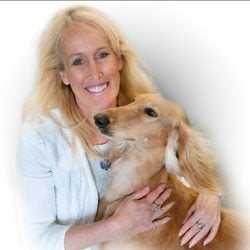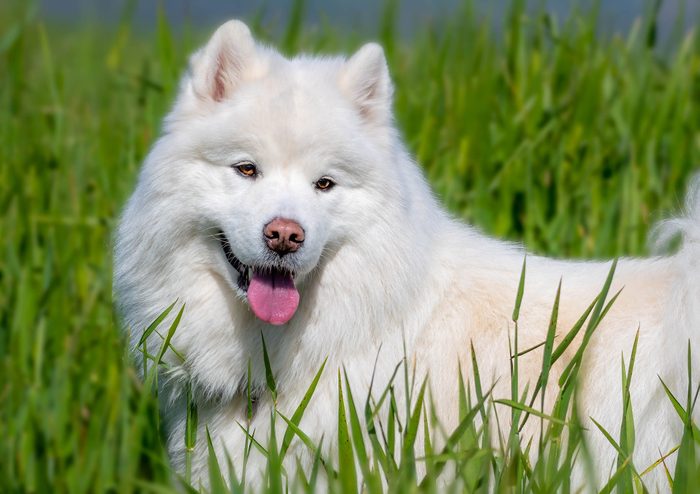
Dog breeds originating in Russia
During my time owning and running a busy dog shop, I was lucky to meet gorgeous dogs of all sizes and personalities daily. One of my favorite regular customers wasn’t one of the most popular dog breeds, but boy, was he a beauty. One of the most stately Russian dog breeds, the big borzoi took a while to win over, but once I got him on my side, he was so serenely sweet.
Like borzoi, many dog breeds from Russia have ancient histories and are rare outside their country of origin—I’ve only met a few Russian dog breeds during my 15 years working with dogs. Yet they’re fascinating to science and history geeks (like me) interested in canine genetics and evolution. If you’re equally charmed by these dogs, know that many of them retain strong working drives. This, combined with their rarity, means that not all of these breeds make the best dogs for first-time owners.
A history of Russian dog breeds
Like their home nation, Russian breeds of dogs are multifaceted, with long, complex and, at times, tragic histories.
The earliest well-preserved remains of a “pet” dog—dating back 33,000 years—were discovered in the Russian part of the Altai Mountains. Studies also suggest medium-sized dogs were widely used for guarding from the 10th to 14th centuries A.D., and the rarer small and large dogs were likely prized possessions of prosperous citizens.
Breeds like the borzoi continued to be associated with the aristocracy until the Russian Revolution, which started in 1917. During that time, many purebred dogs with wealthy owners linked to the monarchy were killed, leading some Russian dog breeds to come close to extinction.
The role of dogs in Russia
Many breeds from Russia are working dogs that evolved over thousands of years to withstand harsh environments and subzero Siberian temperatures. Often they were loyal companions to indigenous peoples of the north or bred for military purposes. These hardy, powerful breeds typically have strong hunting and protective instincts. For much of the Soviet Era, the focus continued to be on developing working dog breeds. Now, smaller breeds are emerging as the demand for apartment-friendly dogs rises.
To find out more about the rich history and unique characteristics of these breeds, I spoke to three experts with experience in canine behavior, training, veterinary care and genetics. Ahead, they explain what you need to know about notable Russian dog breeds.
Get Reader’s Digest’s Read Up newsletter for more pets, humor, travel, tech and fun facts all week long.
About the experts
|
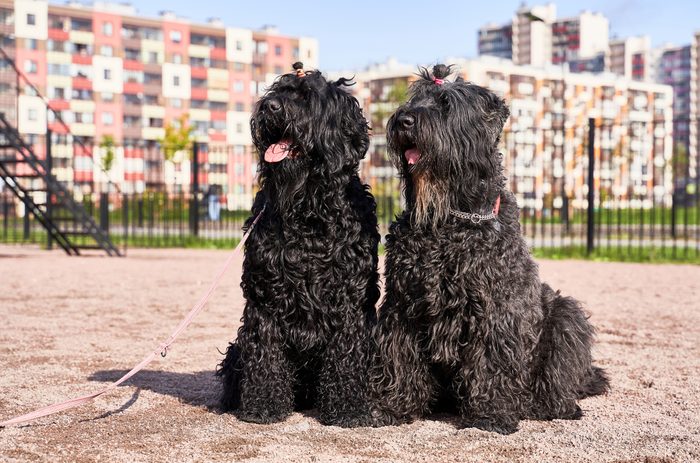
Black Russian terrier
Don’t be fooled by the misleading name: These big-boned, brawny, courageous dogs have only around 15% to 30% terrier in them. The rest is a mix of breeds, including Rottweiler and Newfoundland. Black Russian terrier (BRT) development began in the 1930s in a secret government kennel in Moscow. Their key role was to patrol the fences of borders, prisons and military buildings. As their working role was reduced in the 1950s, they became more popular as protective companion dogs. While still rare outside their home country, Black Russian terriers received American Kennel Club recognition in 2004.
“BRTs can be aloof with strangers, but that doesn’t mean they can’t become more gregarious with appropriate, early and ongoing socialization and training,” says dog trainer and canine behavior consultant Robert Haussmann. “They’re quick to learn, very intelligent and stubborn. But they respond well if you train them with respect and kindness.”
He says that their guarding traits mean they might not be ideal apartment dogs—picture them barking every time they hear something in the hallway. Their thick double coat also means they can struggle in sultry southern states. As for their ideal owners, dog trainer Liz Dimit says BRTs may be a good fit for active families who have experience handling large, athletic, powerful breeds.
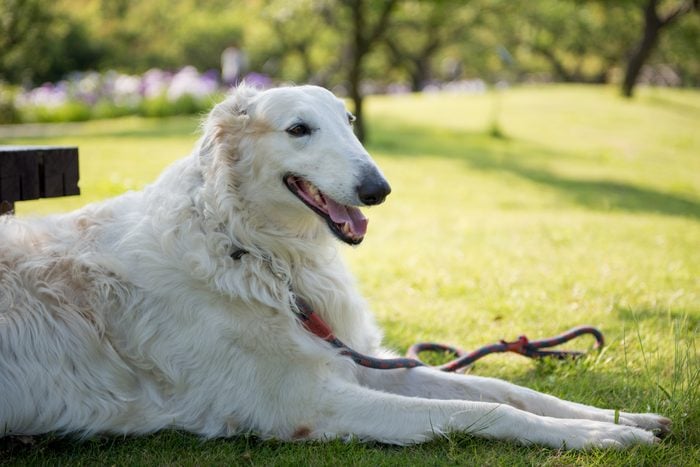
Borzoi
The majestic, dignified borzoi (also known as the Russian wolfhound) is an instantly recognizable long-nosed breed. These dogs have long been associated with the Russian aristocracy, with the Grand Duke of Novgorod keeping them for hare coursing in the 13th century and the Romanovs using them to hunt wolves in extravagant festivals during their reign. The breed would likely have gone extinct during the Russian Revolution, but it was brought back from the brink by devoted overseas breeders. That’s a boon to dog lovers everywhere. “Borzois are calm, mellow, polite and respectful,” Haussmann says. “They also look like mythical creatures.”
The word borzoi means “fast” in archaic Russian, and it’s an apt name: They’re one of the fastest dog breeds in the world. This, combined with their strong prey drive, strength, emotional sensitivity and natural wariness, can present some challenges, especially if they don’t receive appropriate early socialization. “They can also be a little skittish and flighty,” Haussmann says. But if you get their socialization right and can offer these dogs a secure space to let off steam, they’re affectionate couch potatoes with a definite “off” switch.
As for points to ponder before adopting a borzoi? “The breed is susceptible to bloat [gastric torsion] due to their deep chest,” Dimit says. Feeding multiple small meals daily, using slow feeders and minimizing anxiety at feeding times can help reduce the risk of this life-threatening disease.
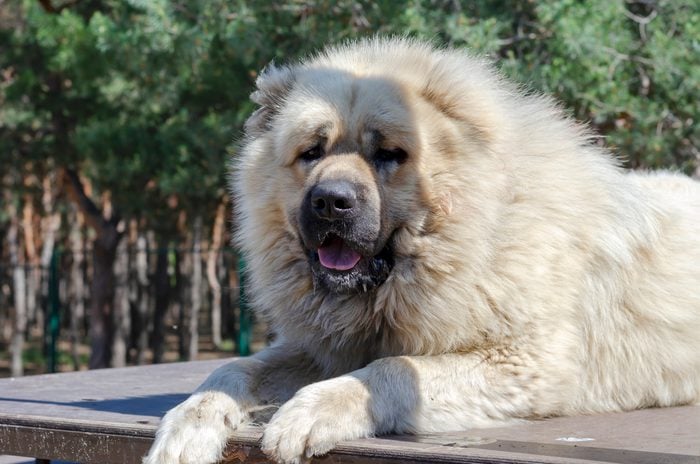
Caucasian shepherd dog
The colossal Caucasian shepherd dog was bred to protect livestock roaming the Caucasus mountain range from predators, and you’ll still see this ancient breed working in the way its ancestors did. “These dogs are immense, heavy boned, bold and fearless,” Haussmann says. “They need the right owner and the right home.”
You’ll want to take any space constraints into consideration. These puppies can grow into furry giants, measuring 23 to 30 inches at the shoulder and 99 to 170 pounds. Despite not being particularly high energy, this giant guarding breed isn’t the best fit for city or busy suburban homes with lots of guests. Haussmann explains that they can be challenging dogs to train because they are so smart and independent. They also need space to roam, so a secure yard is a must. You’re going to have to work extra hard on early socialization and training to prevent their protective instincts from escalating into problem behaviors.
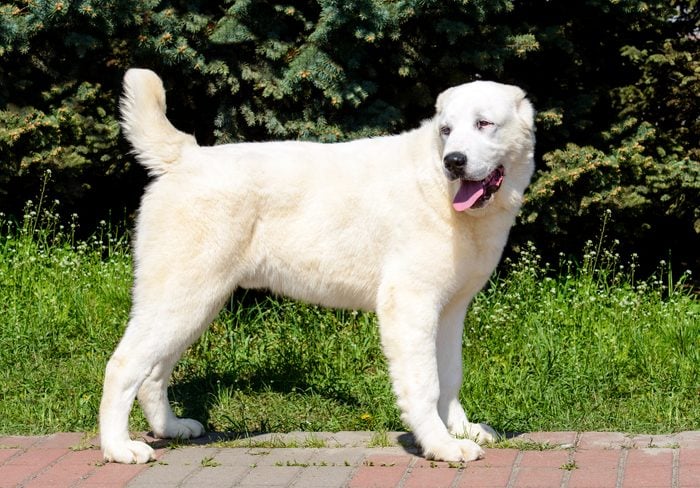
Central Asian shepherd dog
The Central Asian shepherd dog (also known as the Alabay) is one of the most ancient breeds, with evidence of these dogs dating back over 5,000 years. “It was bred largely from aboriginal dogs,” says veterinarian David Haworth, DVM. In other words, these dogs aren’t a result of breeders mixing imported purebred dogs from lineages derived outside central Europe. These naturally selected dogs originate from across Central Asia, rather than one specific country, though Turkmenistan has adopted the breed as a symbol of national heritage.
Primitive dogs are still used by nomadic tribes as protectors and livestock guardians, but the former Soviet Union developed and standardized a modern version of the breed, sometimes referred to as the Central Asian ovcharka, in the 1930s.
Unsurprisingly, this is another Russian dog breed that needs a specific, experienced home. Fearlessly protective, with unending stamina, these huge, powerful dogs have a strong desire to do their job, and their willful, independent nature makes training challenging. A large yard, quiet location, early socialization and confident and respectful handling are a must when owning a Central Asian shepherd dog.
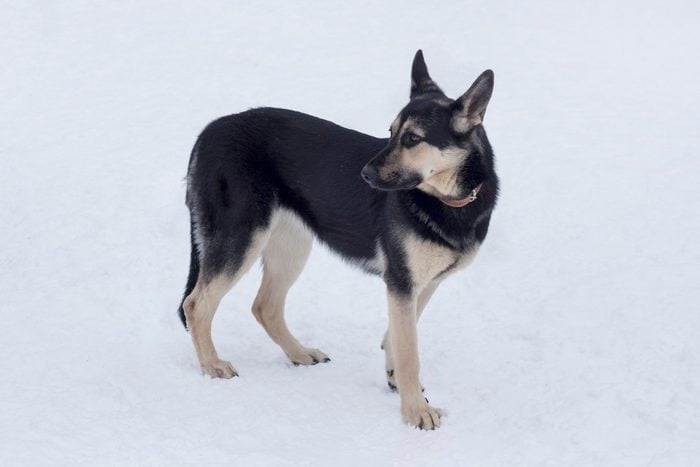
East European shepherd
Eastern European shepherds are relative newbies to the roster of Russian dog breeds. “They were bred in the 1920s to 1930s, immediately prior to World War II in the USSR, to adapt German shepherds and Malinois to colder, harsher conditions for military and guard uses,” Dr. Haworth says. Also known as Vostochno Evropeiskaya ovcharkas, they are larger and thicker than German shepherds, and the males are significantly larger than the females. According to Dr. Haworth, they come in many colors, but the KGB (the former Russian secret police and intelligence agency) was famous for using only pure black dogs in their operations. While popular in their home country, they aren’t common in the United States.
Fearless, confident, intelligent and calm dogs, East European shepherds can be aloof with strangers. They love to work, have unending stamina and are best suited to homes that can offer appropriate outlets for their innate drives. If you’re a dog sports enthusiast, this easy-to-train dog breed will likely be an enthusiastic partner—they often excel in obedience, agility and more.
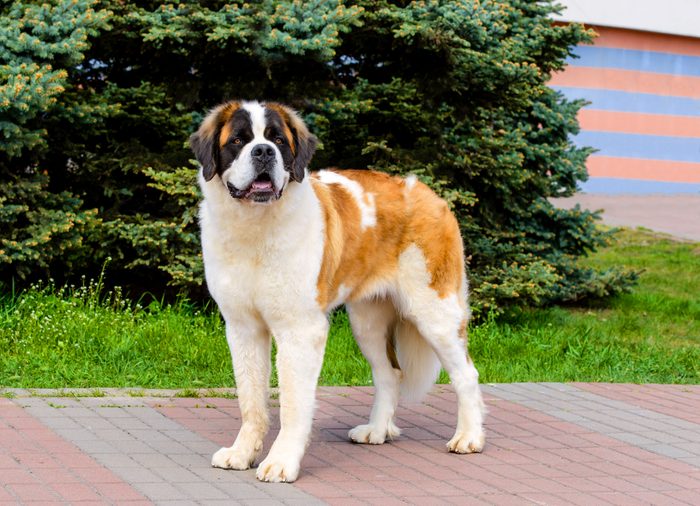
Moscow watchdog
The Moscow watchdog is another modern Russian dog breed, created after World War II. “[These dogs were] originally bred by the USSR Department of the Military, [and] the Russian government still maintains an active breeding center today,” says Dr. Haworth. These big, cold-tolerant guard dogs were created by crossing Saint Bernards, Caucasian shepherd dogs and Russian hounds.
While they are known for having gentler temperaments than Caucasian shepherd dogs, their size and guarding instincts mean that owners need to put in the work when it comes to puppy training to prevent these strong, assertive dogs from developing problem behaviors as they mature—not that most Americans have to worry about that. According to Dr. Haworth, they’re common inside Russia but rare outside, with only a few dozen dogs currently in the United States. But while you may not be bringing one of these beauties home anytime soon, you can certainly appreciate them from afar.

Russkaya tsvetnaya bolonka
By now, you may have noticed a recurring theme of this list: large Russian dogs with working origins. In 1950s Leningrad, a group of enthusiasts set about changing the trend in Russian breeds by developing the fun-loving, fluffy and friendly little Russkaya tsvetnaya bolonka, which translates to “Russian colored Lapdog.”
If you work from home in an apartment, the bolonka could make a great family addition. Sweet, intelligent and eager to please, this affectionate dog breed loves company. That said, “they can be very barky and sensitive to environmental changes,” Haussmann warns. So—you guessed it—early socialization and training are important to avoid noise complaints from the neighbors. You’ll also want to associate grooming with good things because you’ll spend lots of time brushing that long coat.
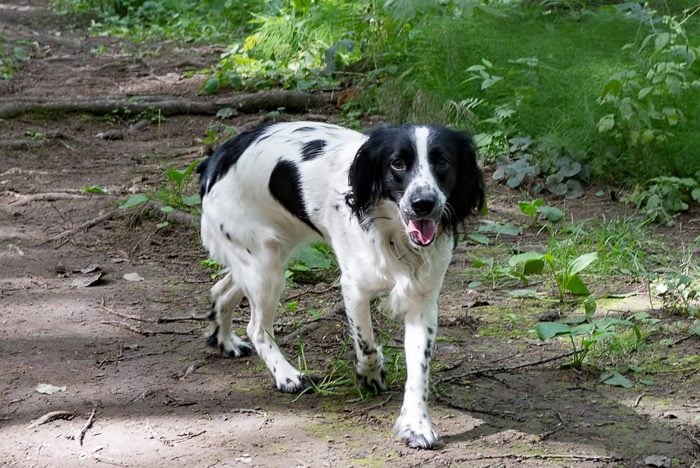
Russian spaniel
The Russian spaniel shares similarities with its English cocker spaniel and springer spaniel relatives. Another comparatively modern entry on the list of Russian dog breeds, these pups have been used by hunters since the late 19th century. Loving, cheerful and full of energy, these pups are generous with their smiles and tail wags. Haussmann says these dogs are good with kids and can make great family pets, provided you lead an active lifestyle. “If it’s a rainy day, you’re always going to have to go out for a good walk,” he says.
All dogs have fantastic senses of smell, but Russian spaniels are so driven by their noses that you’re really going to have to put the work in when it comes to training a reliable recall, especially when there are small furries around. Fortunately, Haussmann says these dogs are eager to please and easy to train.
Russian spaniels are incredibly rare in the United States, so finding a reputable breeder could be a challenge. If you’re attracted to this breed type, consider an English cocker spaniel instead.
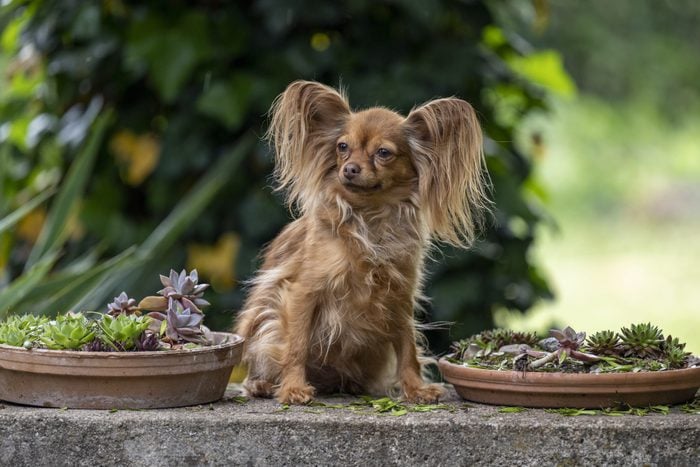
Russian toy
The Russian toy is one of the newer kids on the block in its home country, and it only received recognition from the American Kennel Club in 2022. One of the smallest dog breeds in the world, it was popular with the 18th-century Russian aristocracy as a lap dog.
Haussmann likens these dogs to Chihuahuas but says they tend to be more outgoing, friendlier and easier to train. They might be pocket-size, adaptable dogs, but they still need plenty of enrichment. They are smart, snuggly and fans of staying close to their human family. We don’t blame you for wanting to adopt one of these cuties, but there are a few things to be aware of: First, don’t leave this dinky dog in your yard unsupervised, especially in a rural environment. “This is a rabbit-size dog, and birds of prey will make quick work of it,” Haussmann says.
And like all toy dog breeds, Dimit says these pups can be prone to dental problems, due to their small jaw size. Learning how to brush your dog’s teeth and starting early can keep doggy dentists at bay.
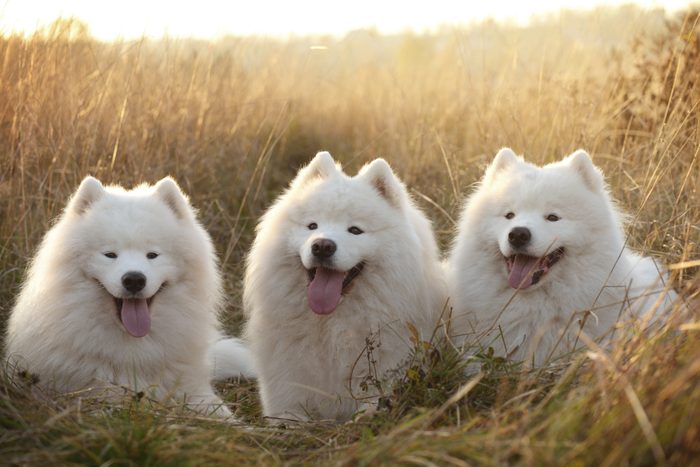
Samoyed
The “smiling” Sammie is one of the most well-known and popular of all the dog breeds from Russia. Originally, the seminomadic Samoyed people bred them to hunt reindeer, act as watchdogs and keep their families warm when the temperatures dropped. As people’s livelihoods evolved, the breed’s role changed from hunting to herding reindeer and sled pulling.
Dimit describes these fluffy, white, medium-sized dogs as social butterflies with gentle souls, explaining that they’re ideal for families with the time and space for the dog’s exercise and play needs. But they aren’t for everyone. “When you see a Samoyed, they’re so strikingly beautiful and friendly, it’s easy to get romanced by them,” Haussmann says.”Then when you have a Samoyed puppy, who is just a fireball of energy, jumpy, gregarious, stump-headed, pulling and leaving hair everywhere, it can be overwhelming.”
You’re going to need to work on leash training to avoid being pulled by these strong, enthusiastic dogs. Also of note: They don’t like being left alone for too long and can get barky and destructive when bored or anxious.
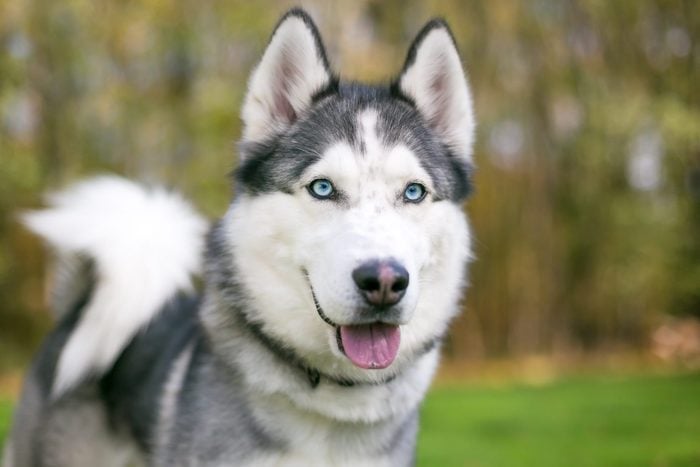
Siberian husky
The Siberian husky is the most popular Russian dog breed. Ancestors of the modern-day breed lived and worked alongside the Chukchi for centuries. These seminomadic indigenous people from northeastern Siberia inhabit some of the harshest lands in the world. The ultimate sled dogs, Siberian huskies thrive in subzero temperatures, pulling light loads over long distances without tiring.
After arriving in North America in the early 20th century, the breed rose to global prominence in 1925. This was when a diphtheria epidemic struck the isolated town of Nome, Alaska. A sled dog relay team was formed to deliver the lifesaving medication across 600 miles. All of the teams were heroes, but musher Leonhard Seppala and his lead dog, Togo, deserve the greatest recognition. Togo is arguably one of the bravest dogs in history. He led his team through the longest and toughest parts of the trail in the harshest conditions, guiding them in a blizzard to lifesaving shelter when Seppala could not navigate. Most modern-day huskies can trace their ancestry to Seppala’s dogs.
Siberian huskies are high-energy, athletic, friendly pack dogs that bond strongly with their families. If you work from home, have a secure or fenced-in yard, love long hikes or jogs on your lunch break and have active weekend adventures, this fun-loving dog could be the perfect match. But be prepared for mischief-making, barking, lots of leash training and a heck of a lot of hair. Huskies are Houdini hounds with a desire to roam and a strong prey drive.
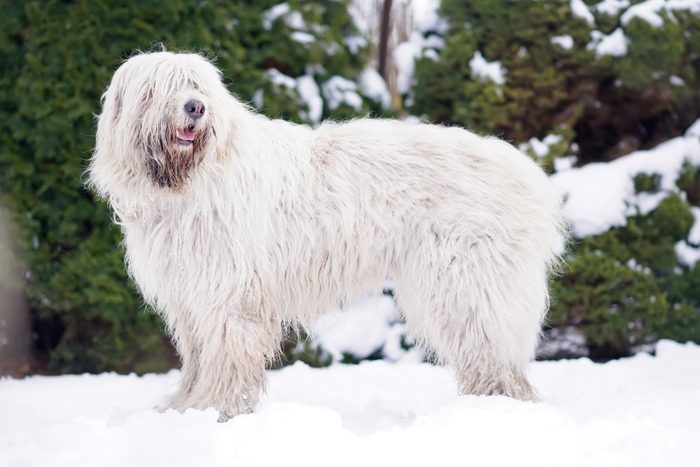
South Russian shepherd dog
The South Russian shepherd dog (aka the South Russian ovcharka) originates from ancient pastoral dogs that herded livestock for nomadic shepherds. These courageous and powerful dogs would also protect the herds from wolves and brown bears. The striking appearance of these long-haired dogs is attributed to original Eurasian sheepdogs being crossed with shaggier Spanish herding breeds.
If you see a well-exercised South Russian shepherd dog, you might assume this breed will be a low-maintenance addition to your family—when their needs are being met, they can be calm and easygoing. But Haussmann says these gorgeous-looking dogs are a lot of work. “They have very high exercise needs and long coats that need a lot of maintenance [and aren’t suited to hot regions],” he says, noting that “they can be wary of people they don’t know and have an impulse to guard.”
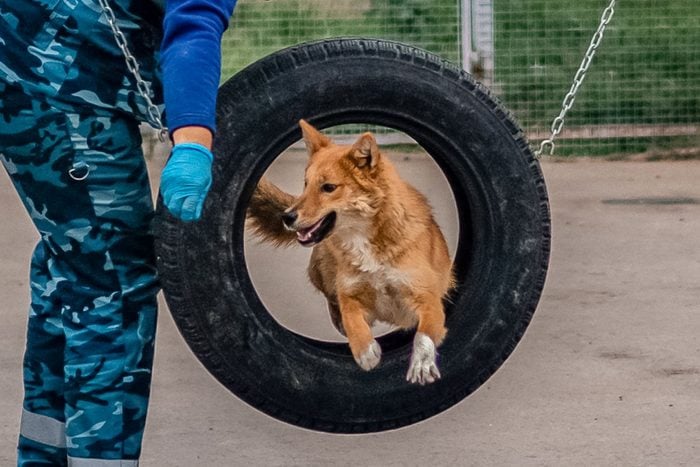
Sulimov
The Sulimov is the most recent and rarest dog breed from Russia. “They were bred by an individual, Klim Sulimov, by crossing laika breeds with golden jackals in the 1970s,” Dr. Haworth says. “It’s one of the prominent examples of jackal hybrids. It’s interesting because traditional jackals were considered a different species from domestic dogs, but they can produce fertile offspring.”
Extreme cold suppresses scents, but as Dr. Haworth points out, jackals have incredible scent-detection powers, and Sulimovs leverage this in their employment as detection dogs. Unlike other dog breeds, they can detect scents in temperatures as low as minus 95 degrees Fahrenheit. “Aeroflot [Russian Airlines] employs several of them for bomb detection at Moscow’s Sheremetyevo Airport,” he says. Currently, you won’t see intelligent, easily trainable Sulimovs anywhere else, as the airline keeps only a small number of these working dogs.
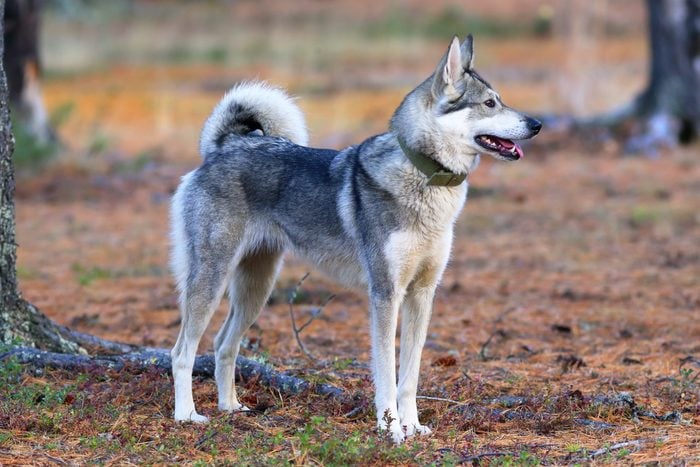
West Siberian laika
Ancient laikas were primitive dog breeds from northern Russia. Their traits naturally varied by region, depending on the environment and needs of the local people. But with the advent of official breed standards for selectively bred laikas, the end of sled dogs as a main mode of transport and the move away from fur hunting, the aboriginal laikas disappeared.
West Siberian laikas are believed to originate from the primitive laika dogs of the indigenous Mansi and Khaty people of west Siberia. Modern breed standards were introduced in the mid-20th century. As with all Nordic spitz-type dogs, this breed has a wolf-like appearance, pricked-up ears and a curling, upright tail. This fast, brave, high-energy and smart dog breed was traditionally used as a versatile hunter. Laikas form deep bonds with their owners but can be aloof with strangers and don’t always get on well with dogs outside their family.
Though this is one of the most popular laika breeds in Russia and is recognized by the United Kennel Club, it isn’t a dog you’re likely to see strolling the streets of North America.
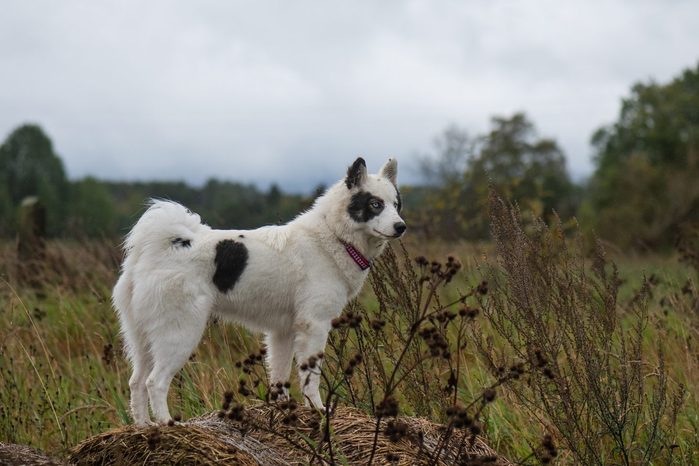
Yakutian laika
The Yakutian laika is the only laika recognized by the American Kennel Club, but it’s still an unusual sight outside Russia. The indigenous Sakha people used these versatile dogs to hunt game, herd reindeer, pull sleds and provide companionship. They continue to be popular sled-pullers today.
Haussmann describes them as independent and intelligent thinkers that respond well to positive training techniques—some tasty treats or fun toys go a long way with these dogs. They’re known for bonding closely with their family and can be very biddable with respectful kids in the household. However, these dogs retain their working drives and best suit an active, dog-savvy home where they will have company most of the day. “They’re high energy, have a high prey drive and are wary of strangers and strange dogs,” he says. Yakutian laikas are also champion shedders—a vacuum that can handle dog hair is a must.
Why trust us
At Reader’s Digest, we’re committed to producing high-quality content by writers with expertise and experience in their field in consultation with relevant, qualified experts. For this piece, Gemma Johnstone tapped her experience as a longtime pet writer, owner of a decade-long dog business and volunteer at dog rescue organizations. Then Caroline Coile, PhD, an award-winning journalist specializing in canine breeds, health and science, gave it a rigorous review to ensure that all information is accurate and offers the best possible advice to readers. We verify all facts and data, back them with credible sourcing and revisit them over time to ensure they remain accurate and up to date. Read more about our team, our contributors and our editorial policies.
Sources:
- Liz Dimit, ABCDT, CPDT-KA, certified dog trainer and franchise trainer for Dogtopia; email interview, April 1, 2024
- David Haworth, DVM, PhD, executive vice president of research and development at Embark; interview, March 28, 2024
- Robert Haussmann, CPDT-KA, certified dog trainer, canine behavior consultant and co-founder of Dogboy NYC; video interview, March 29, 2024
- PLOS ONE: “A 33,000-year-old incipient dog from the Altai mountains of Siberia: evidence of the earliest domestication disrupted by the last glacial maximum”
- International Journal of Osteoarchaeology: “Study of the medieval dogs from Novgorod, Russia (X–XIV century)”
- American Kennel Club: “Meet the Russian Toy: AKC’s newly recognized dog breed in 2022”

